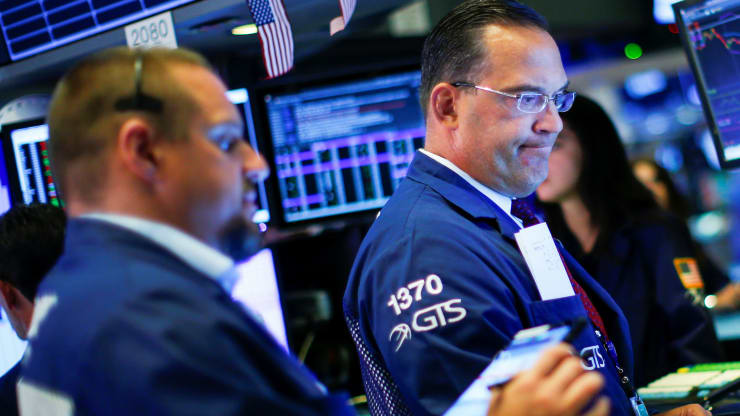
Stocks rose on Wednesday as the energy sector got a lift from higher oil prices, but sentiment was kept in check with a key part of the U.S. yield curve inverting even further, exacerbating fears of an impending recession.
The Dow Jones Industrial Average closed 258.20 points higher, or 1% at 26,036.10. The S&P 500 climbed 0.7% to 2,887.94 while the Nasdaq Composite advanced 0.4% to end the day at 7,856.88. Chevron and Exxon Mobil contributed to the Dow’s gains, rising 0.8% and 0.7%, respectively.
The S&P 500 energy sector jumped 1.4%, led by a 10.6% surge in Cimarex Energy, as U.S. crude prices surged more than 1%. Oil jumped after the Energy Information Administration said U.S. crude inventories plummeted by 10 million barrels last week. Crude gained settled at $55.78 per barrel.
Consumer stocks such as Tiffany and Kohl’s also rose 3% and 3.4%, respectively. Tiffany posted quarterly earnings that beat analyst expectations.
However, trading volumes remained subdued ahead of the U.S. Labor Day holiday on Monday. The SPDR S&P 500 ETF Trust (SPY) traded just over 55 million shares. That’s well below its 30-day volume average of 81.8 million shares. Lower trading volumes can lead to bigger swings in markets.
Stocks started off the session trading lower as the bond market continued to flash a recession signal.
The closely watched spread between the 10-year Treasury yield and the 2-year rate briefly fell to negative 6 basis points Wednesday. The move extended losses from the previous session when the spread registered its lowest level since 2007.
A 10-year rate below the 2-year yield is viewed by fixed income traders as an important recession prognosticator, marking an unusual phenomenon as bondholders receive better compensation in the short term. Meanwhile, the U.S. 30-year Treasury yield fell to a new record low on Wednesday.
However, MRB Partners strategist Prajakta Bhide thinks recessionary fears may be overblown.
“The yield curve’s inversion this year is a symptom of external growth stress and powerful distortions in global bond yields and does not reflect restrictive Fed policy,” he said in a note. “Thus, it does not warrant a bearish economic interpretation.”
“Even if the inverted yield curve captures investor’s uncertainty about worsening global growth … a balanced perspective would still suggest that the odds of a recession in the next 12 months are no higher than 20%,” Bhide added.
Market participants were also closely monitoring trade developments between the world’s two largest economies. The ongoing U.S.-China trade dispute has placed an increasing strain on the global economy, prompting policymakers to respond with interest rate cuts and stimulus measures to bolster growth.
The White House is scheduled to impose the first stage of U.S. tariffs on $300 billion worth of Chinese goods on Sunday. China is set to respond with tariffs on U.S. products on the same day.
“Risks to the global economy and markets have increased, following an escalation in the trade conflict between the US and China,” said Mark Haefele, global chief investment officer at UBS Global Wealth Management, in a note. “While central banks and governments may seek to limit the downside, the upside for stocks looks limited—barring an unexpected thawing of trade tensions.”
Worries over trade and the economy have pushed down stocks this month. The Dow, S&P 500 and Nasdaq were all down at least 3% for the month through Wednesday’s close.























